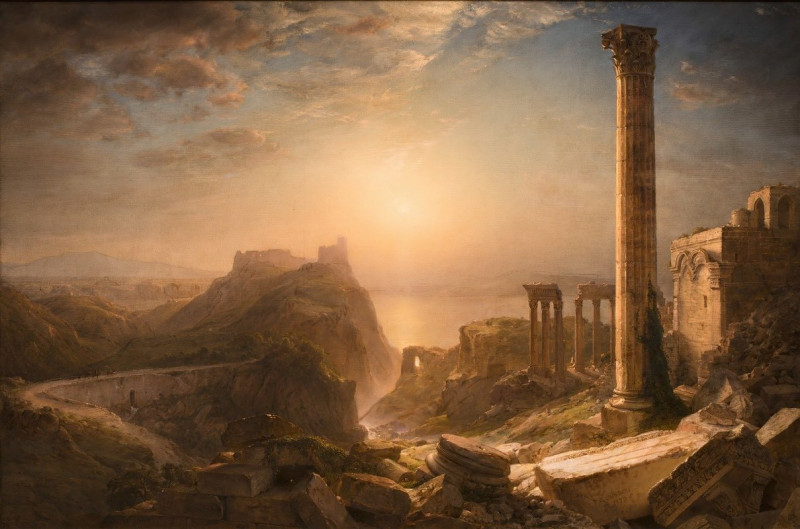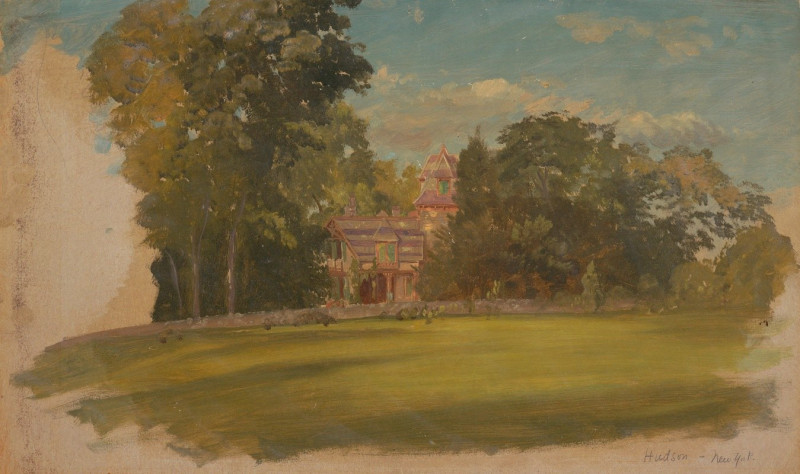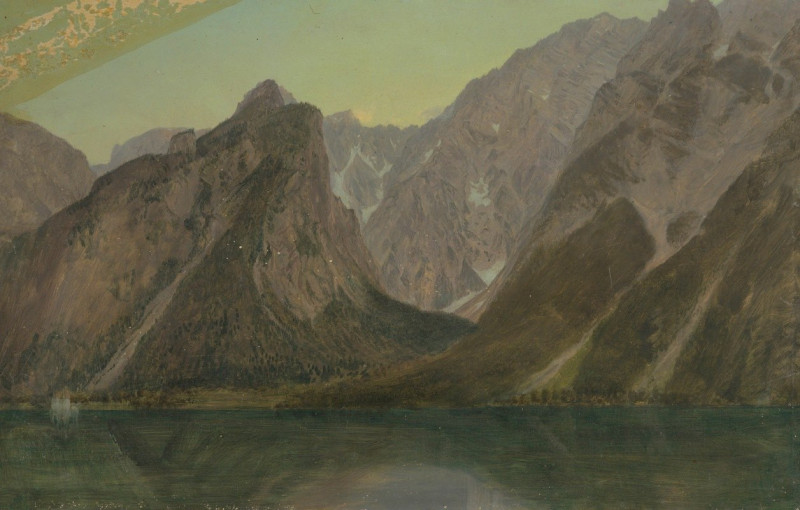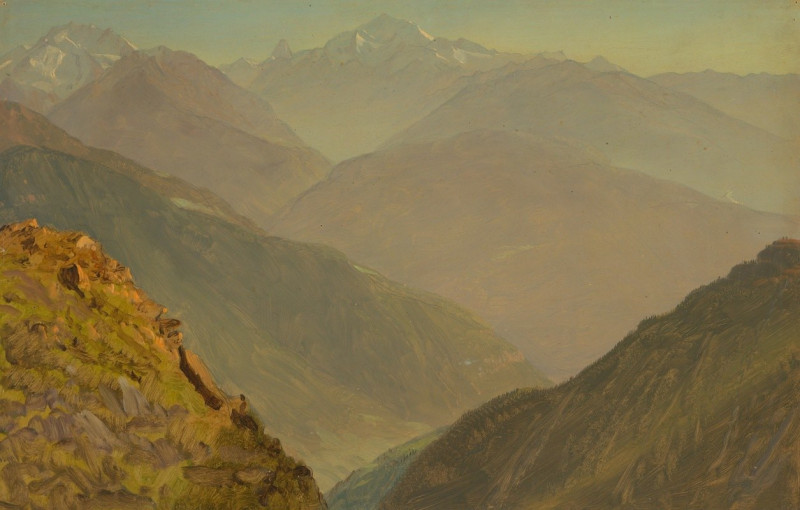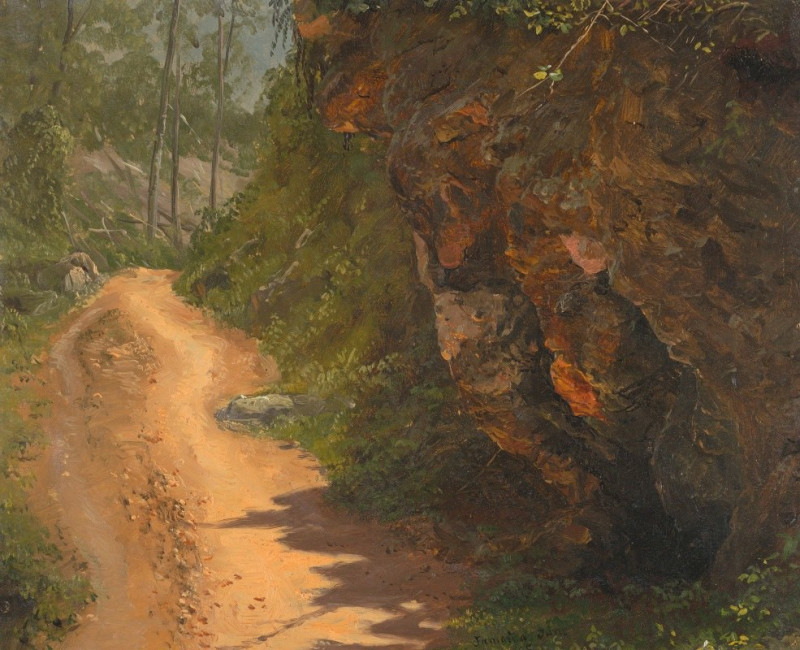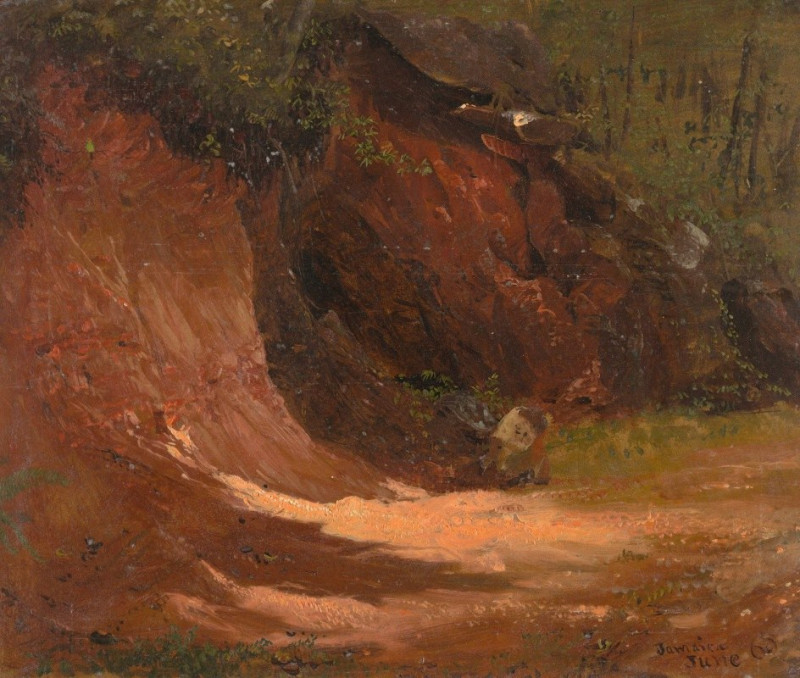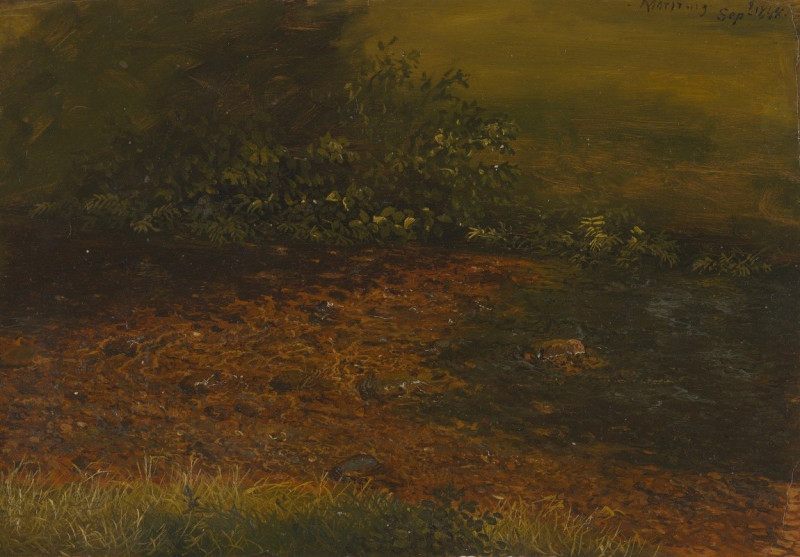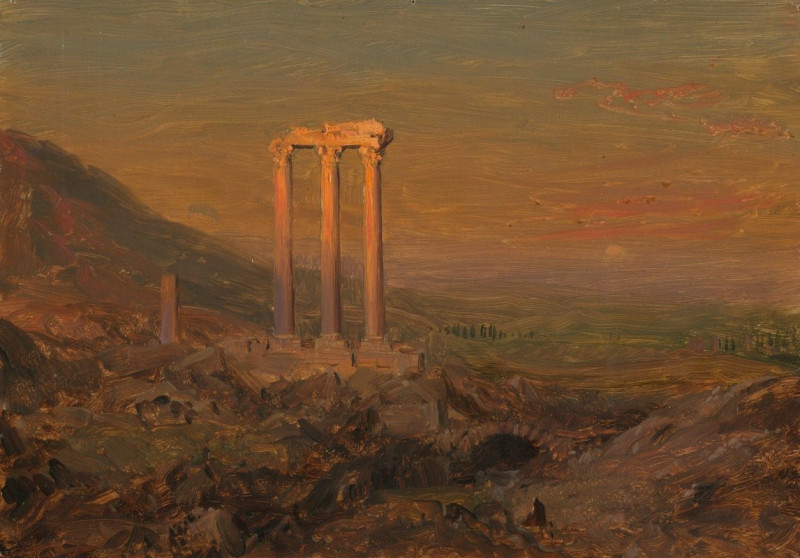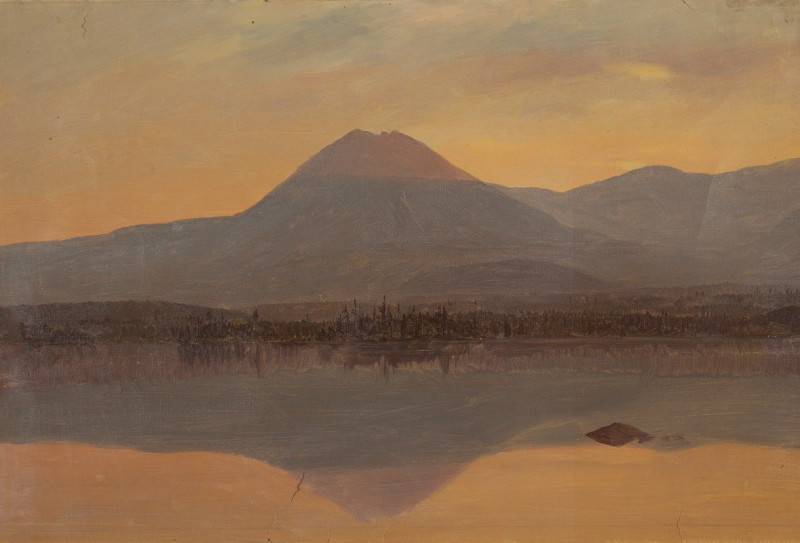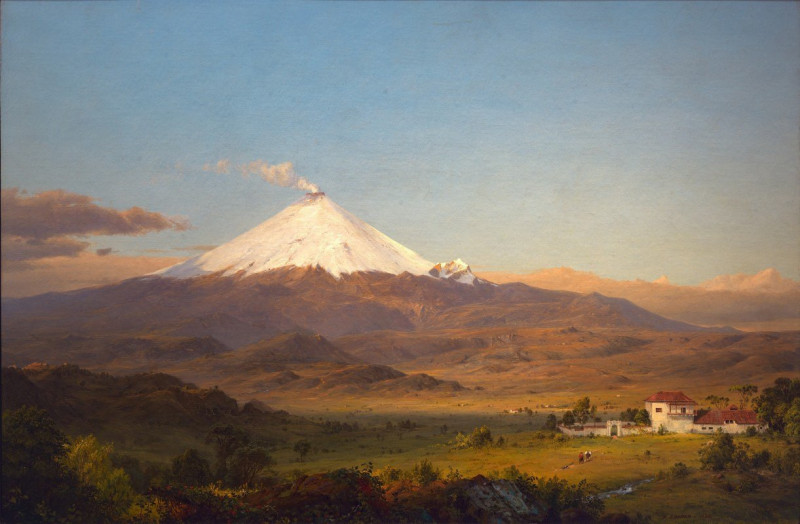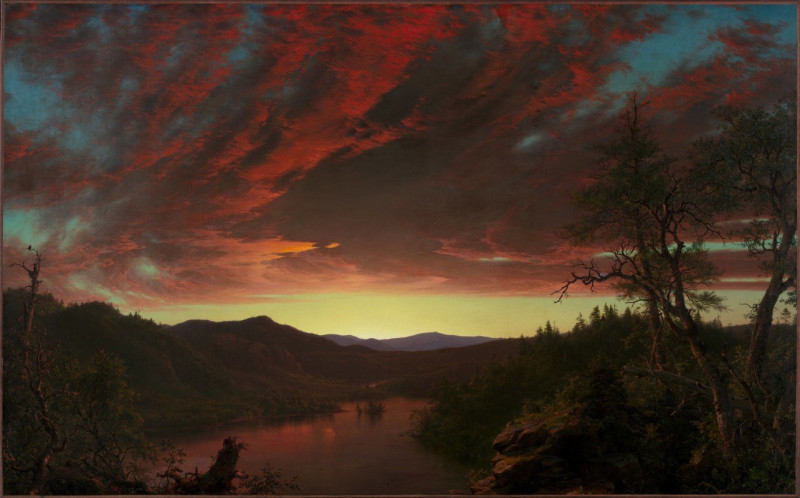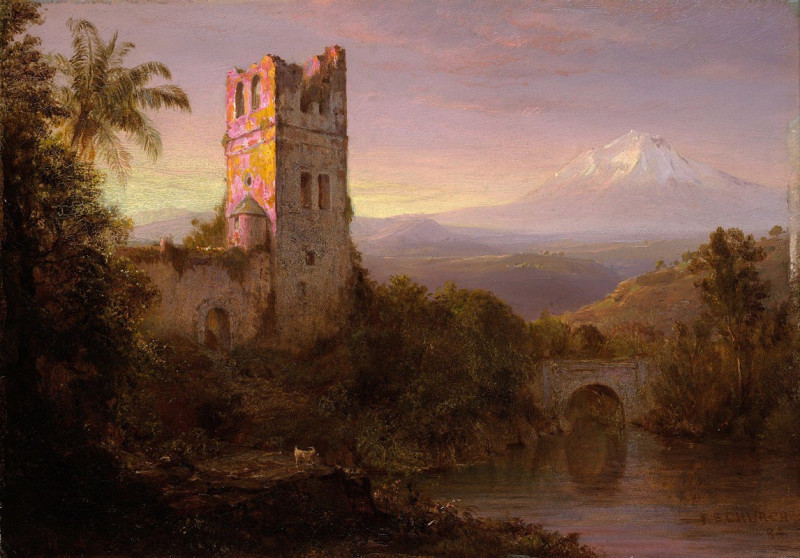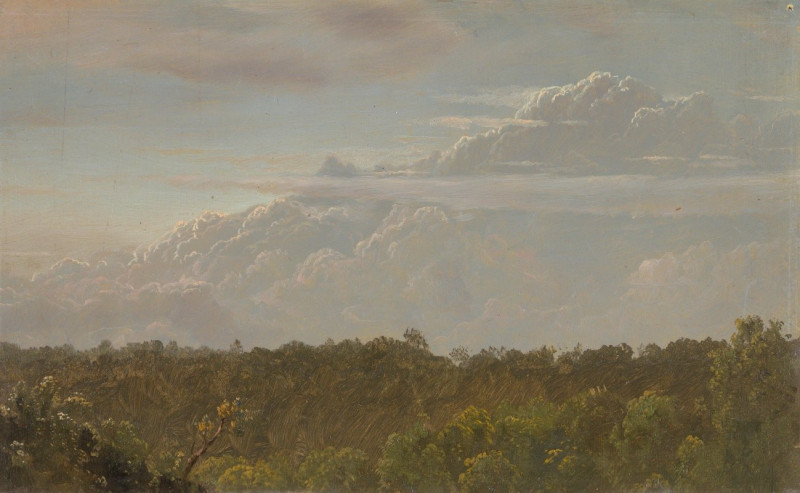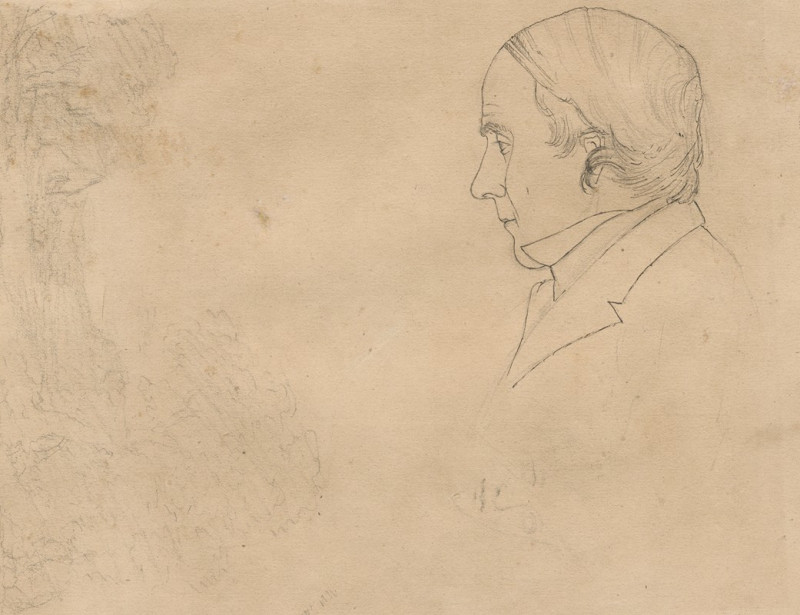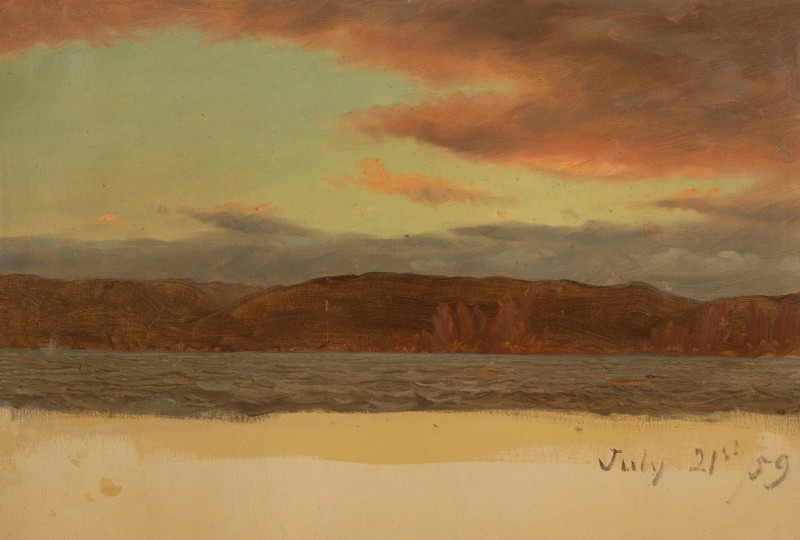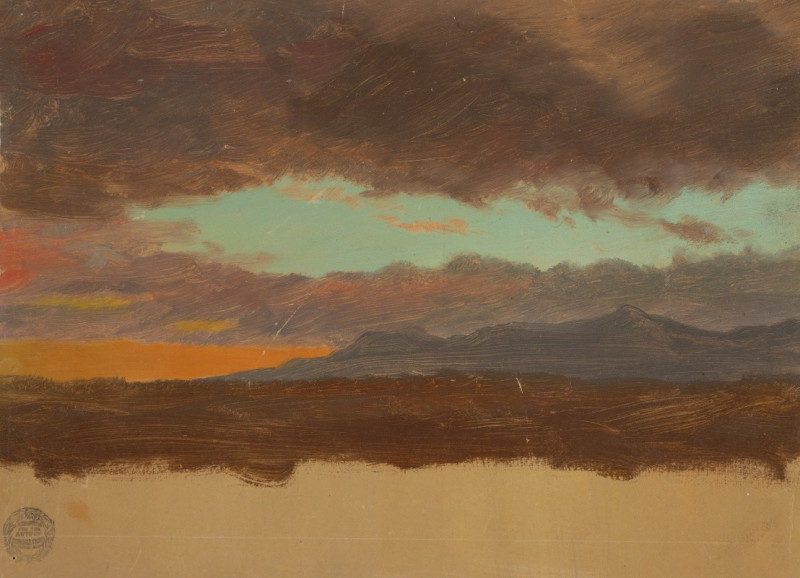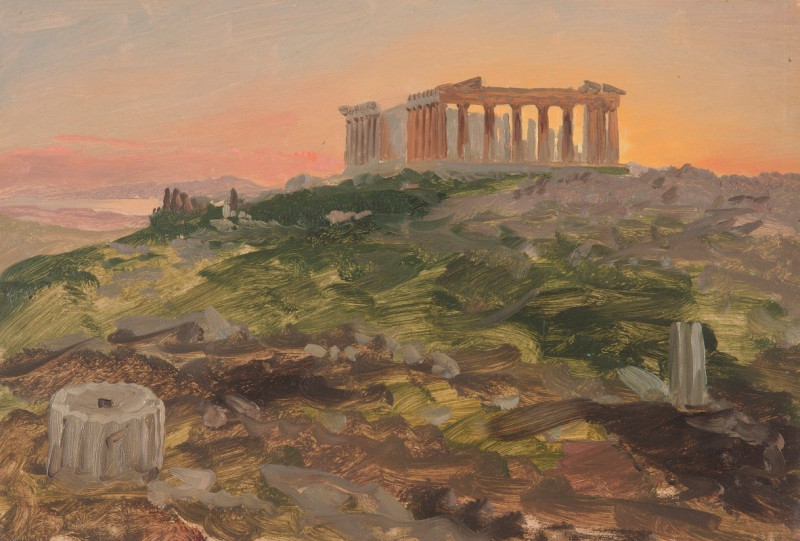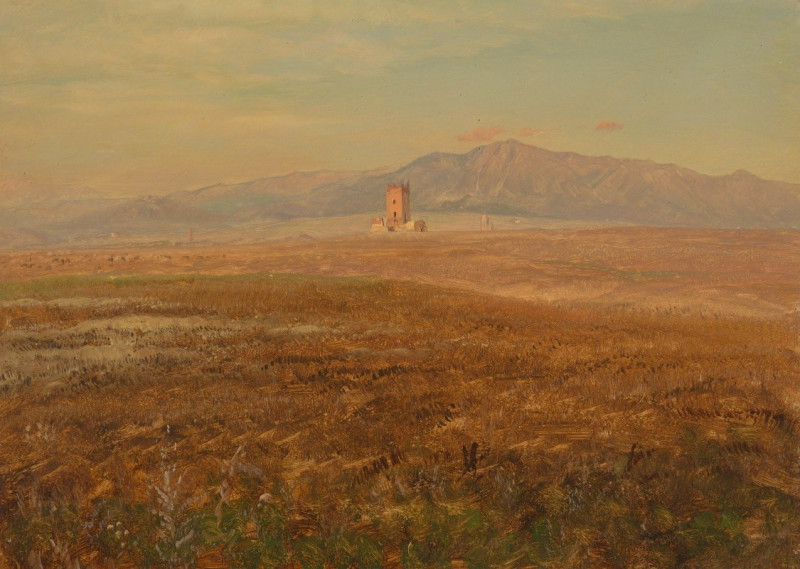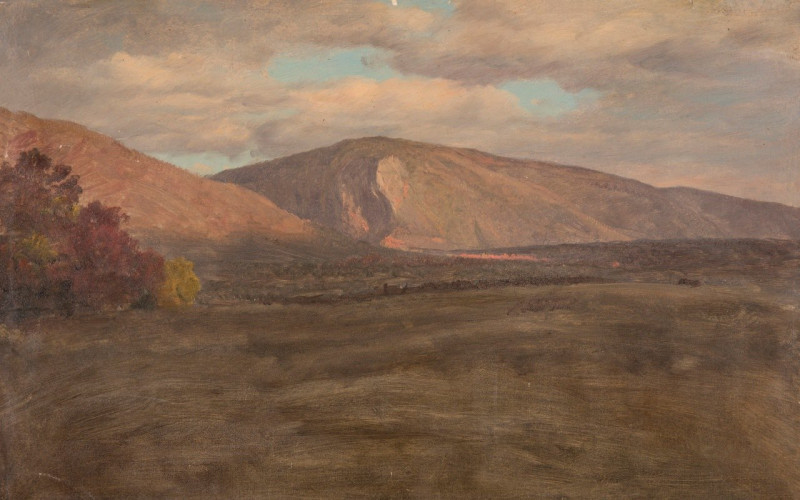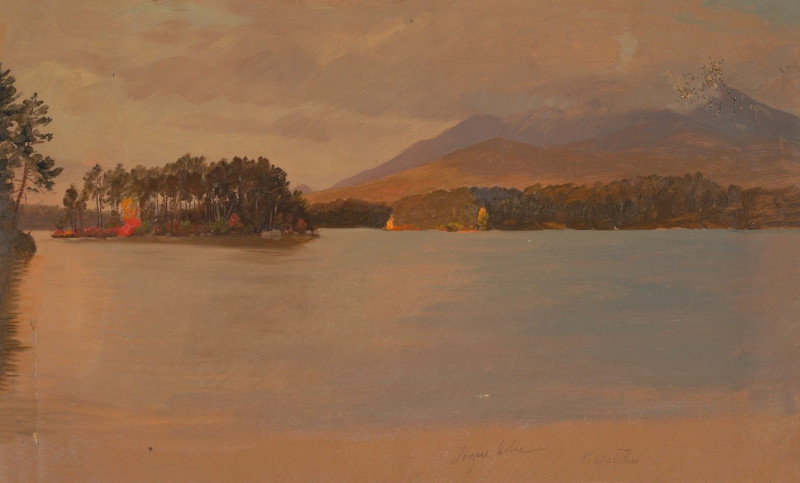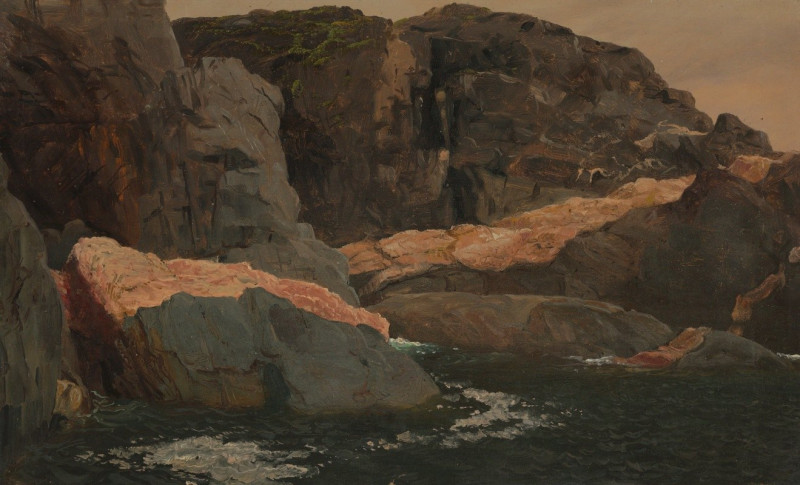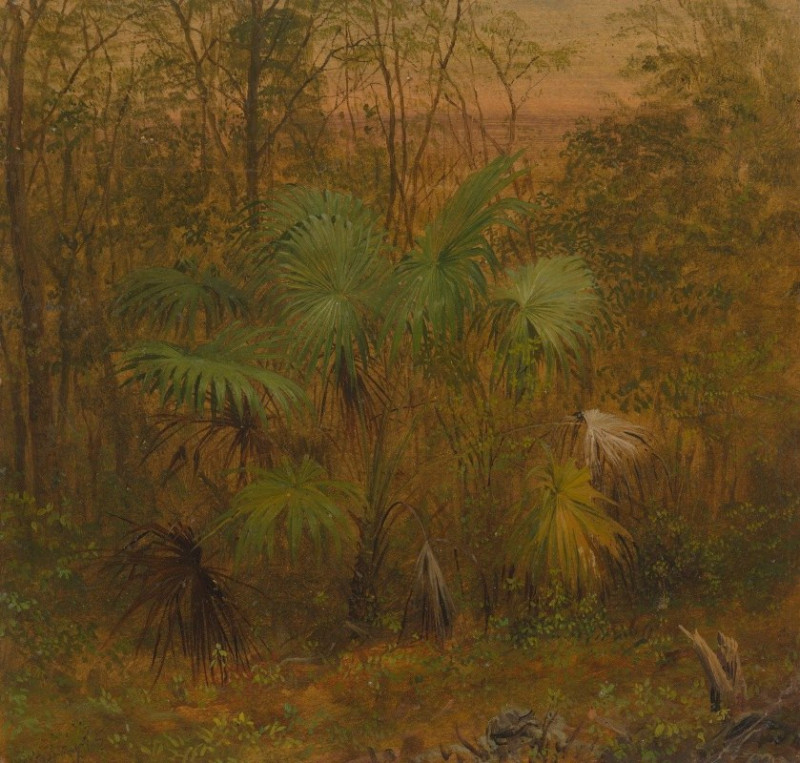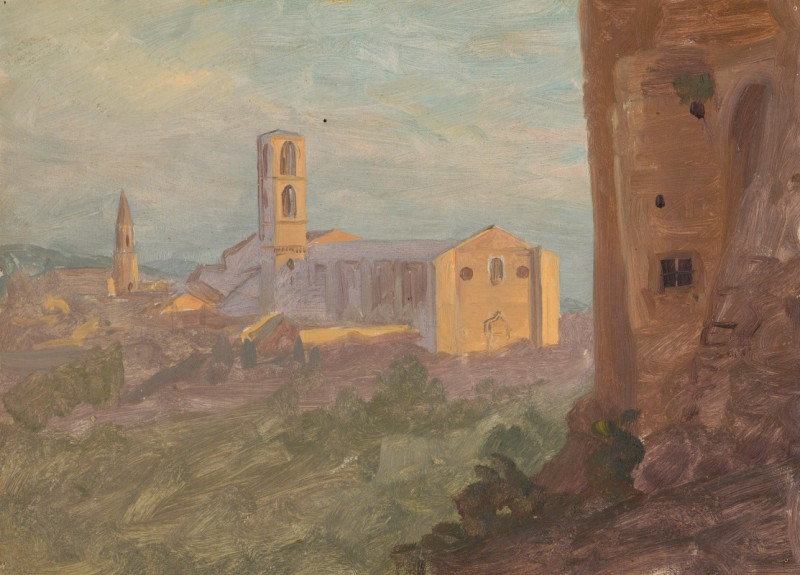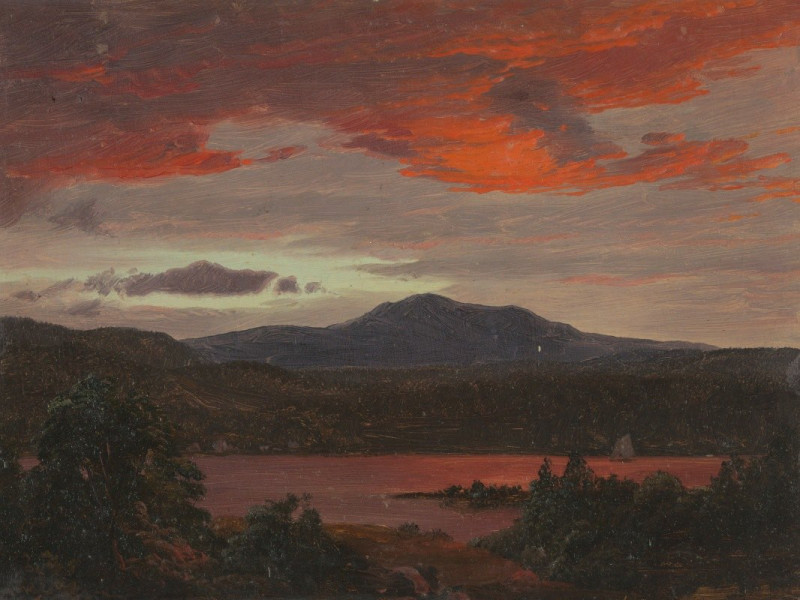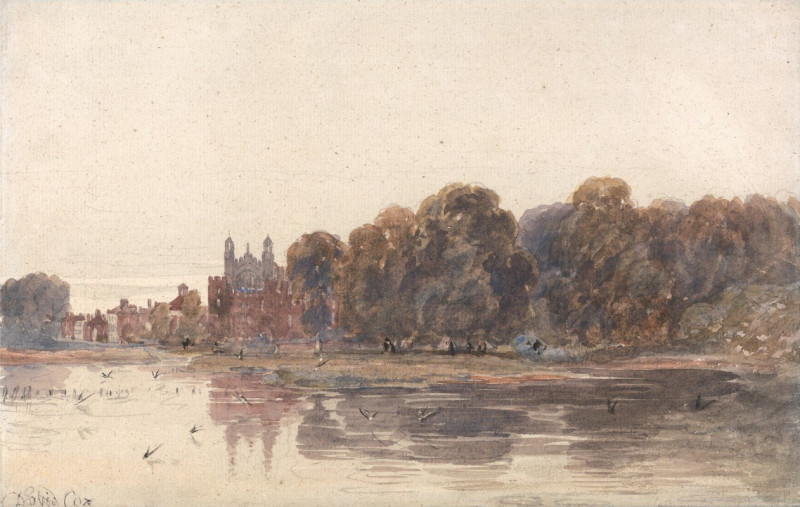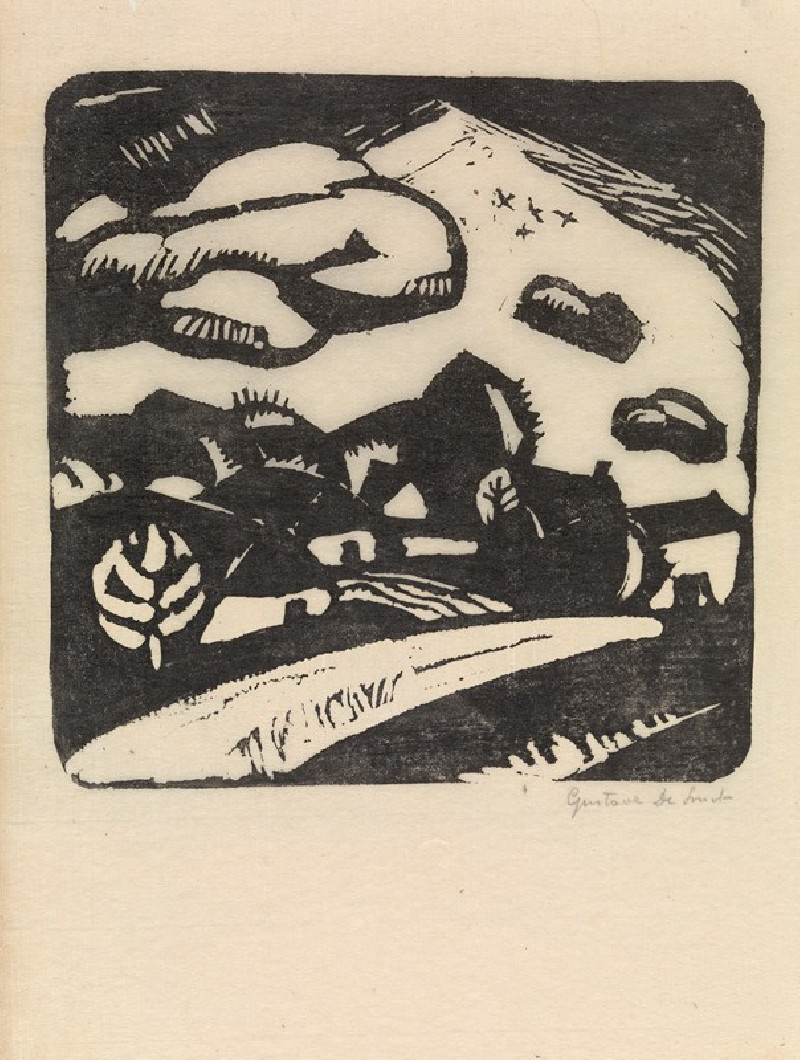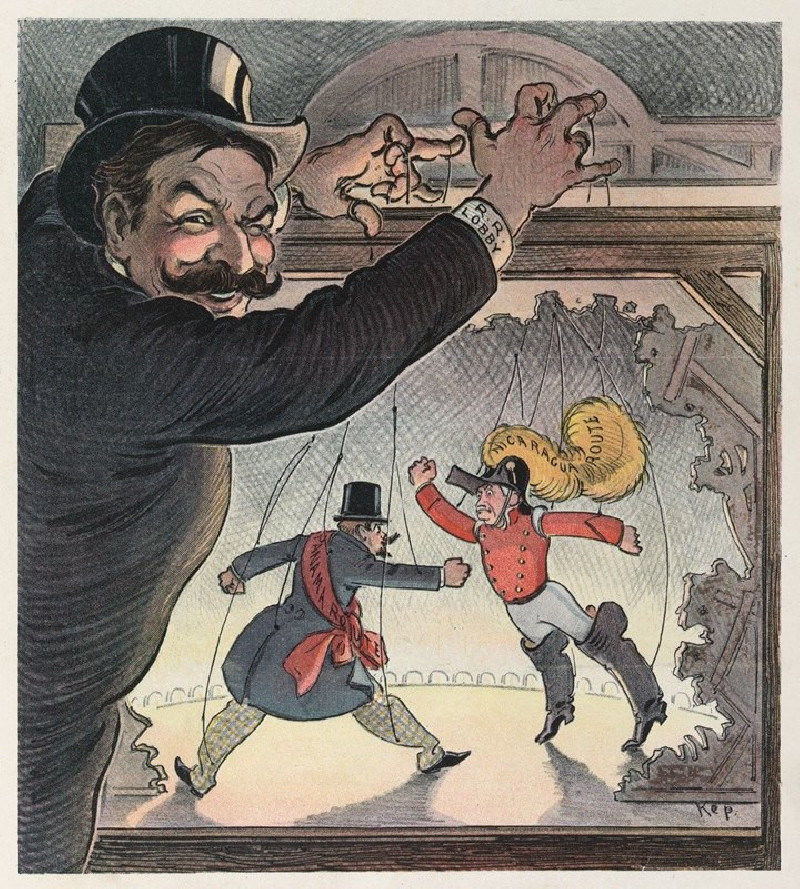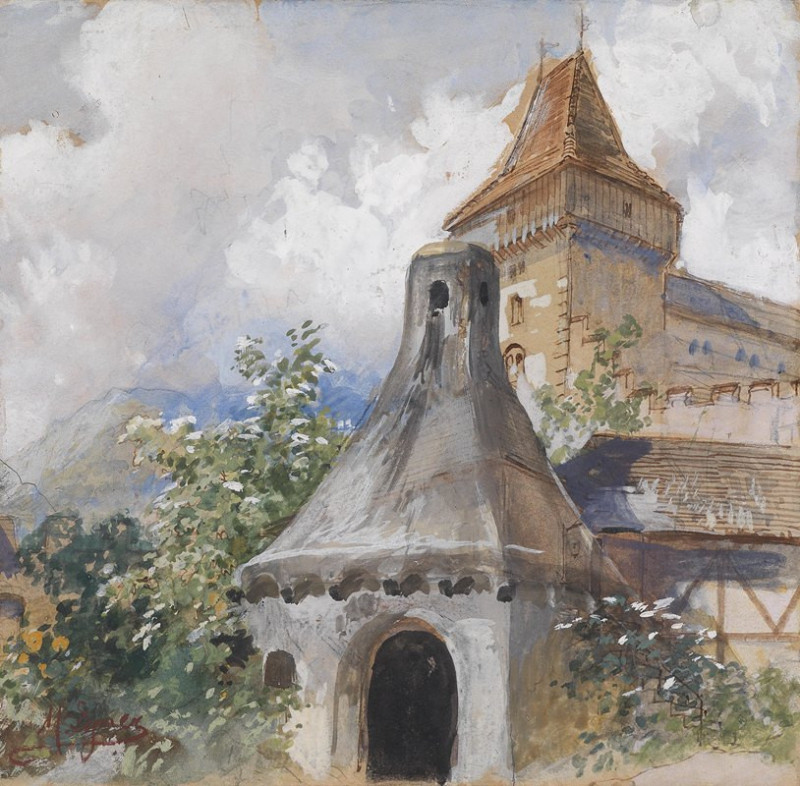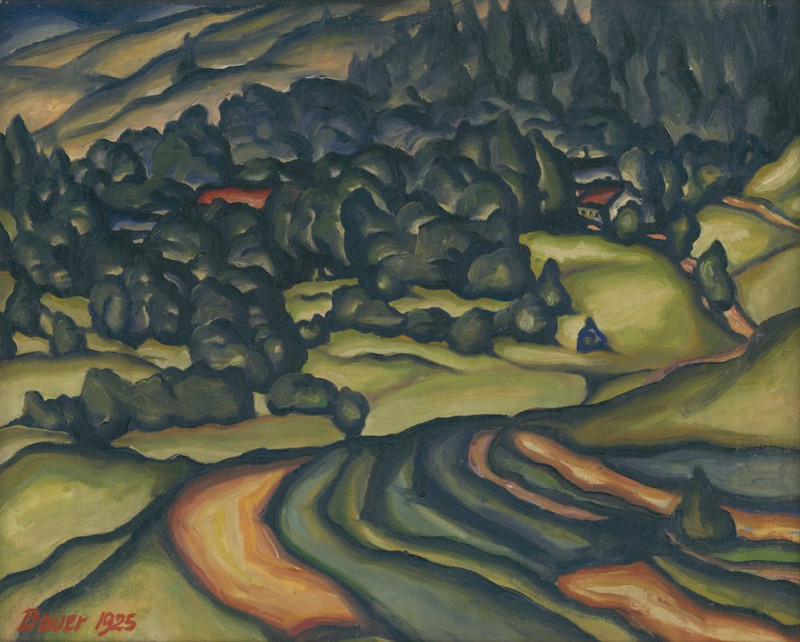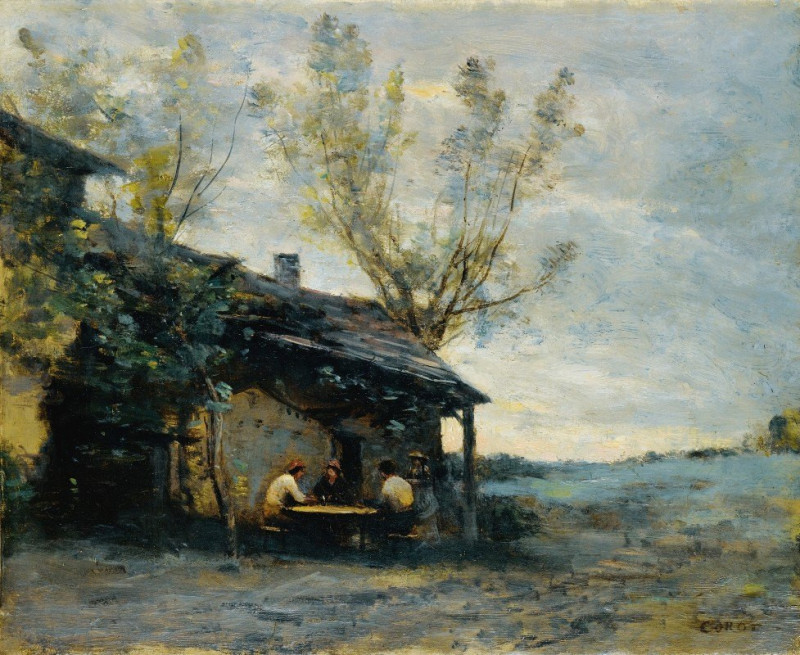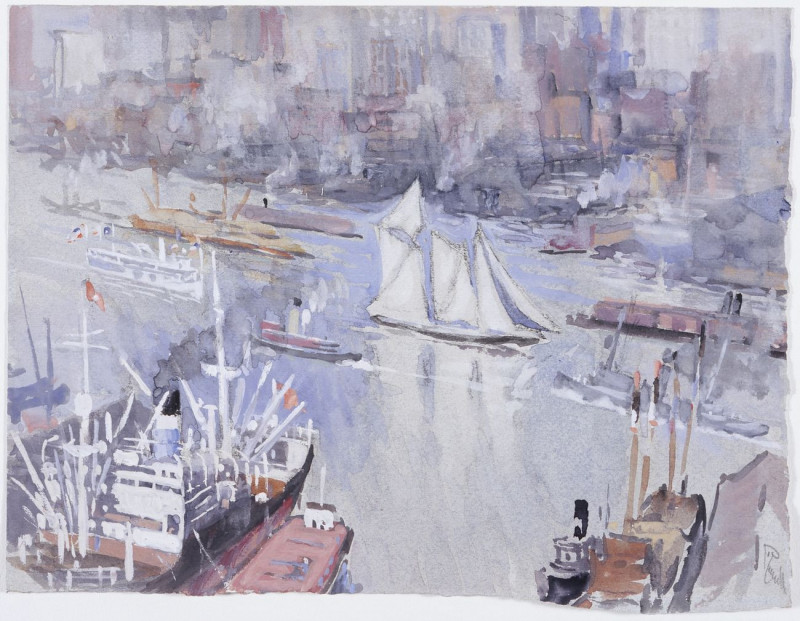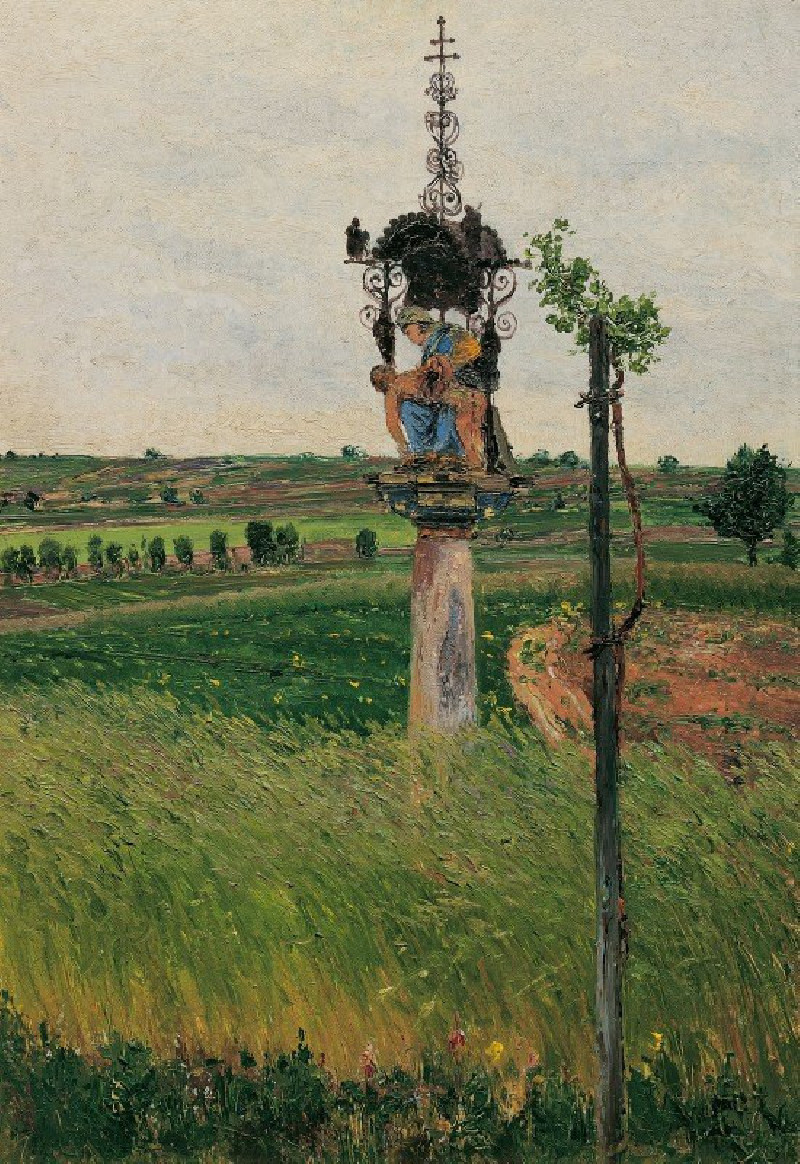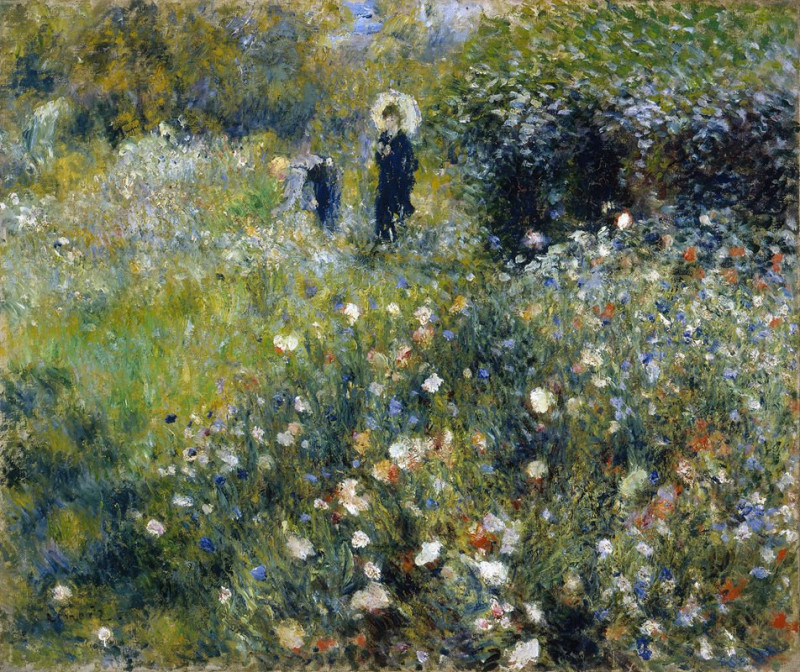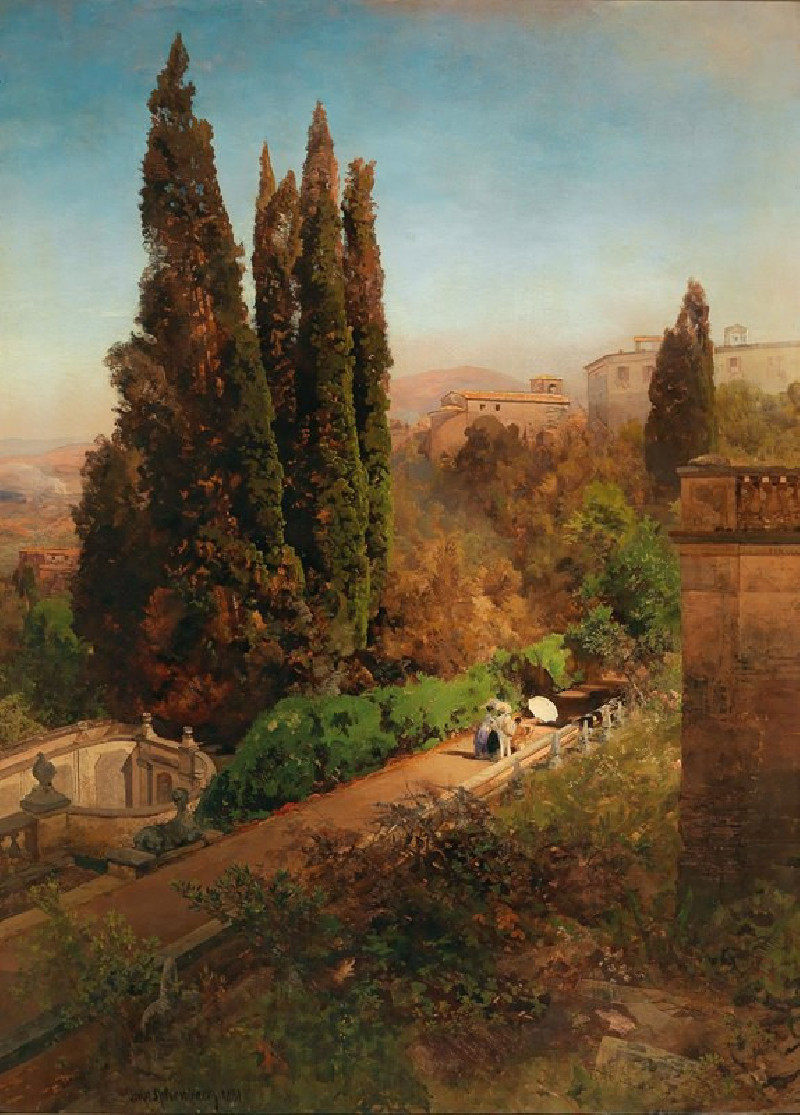Syria by the Sea (1873)
Technique: Giclée quality print
Recommended by our customers
More about this artwork
"Syria by the Sea" (1873), painted by the renowned American artist Frederic Edwin Church, offers viewers a breathtaking landscape steeped in both natural beauty and historical depth. This stunning painting captures a sublime vista, possibly an idyllic yet dramatized view of the ancient lands along the Mediterranean coast.In the foreground, the ruins of classical architecture provide a poignant reminder of past civilizations. A series of majestic, towering columns and scattered stone blocks, possibly part of a temple or a similar significant structure, are bathed in the warm glow of the setting sun. The crumbling fasçades and fallen archways invite the observer to ponder the storied past of these ancient stones.Beyond the ruins, the landscape unfolds into a rugged terrain that leads to the tranquil sea. The winding path in the middle ground suggests a journey through the undulating hills, leading toward the distant water. The sun, hanging low in the sky, casts a brilliant light that reflects off the water and illuminates the clouds, creating a halo of warmth that contrasts with the cool shadows of the ruins.Frederic Edwin Church’s skill in capturing light and his meticulous attention to detail are evident in this painting. His use of light not only highlights the natural beauty and the sheer cliff faces but also symbolizes hope and the eternal nature of human endeavors amidst the ruins of time."Syria by the Sea" evokes a sense of wonder and nostalgia, inviting viewers to reflect on the beauty of nature and the legacy of history, artistically bridged together by Church’s masterful hand.
Delivery
Returns
Frederic Edwin Church (May 4, 1826 – April 7, 1900) was an American landscape painter born in Hartford, Connecticut. He was a central figure in the Hudson River School of American landscape painters, best known for painting large landscapes, often depicting mountains, waterfalls, and sunsets. Church's paintings put an emphasis on realistic detail, dramatic light, and panoramic views. He debuted some of his major works in single-painting exhibitions to a paying and often enthralled audience in New York City. In his prime, he was one of the most famous painters in the United States.

